Handling deadly weapons
The V&A has collected arms and armour as examples of ornamented design and metalworking techniques from 1857 – and we have over 200 Japanese swords in the collection. In collaboration with the Studio Photography and Technical Services teams, over 2 months we audited, photographed and condition checked each of these bladed weapons individually at the collections store in Blythe House.

Before we could get started, we spent a fascinating afternoon of Samurai stories and training with Gregory Irvine, senior curator, from the East Asian Department. These edged weapons are still sharp – and the long, slender and gleaming metallic blades can be fearsome. Whether drawing a tachi or a katana, the toughest part is the initial pull to extract sword collar, before drawing the entire length of the blade. If you pull in an uncontrolled way, you can cut someone. Gloved and ready, I gave the sword an initial tug and then went on to slide the sword out slowly and carefully as it rested along the back of the sheathing – I had drawn my first sword!
Deeply embedded in Japanese politics, economics and culture, the samurai first appear in historical records in the 10th century. They came to prominence through their military prowess – they were experts in archery, swordsmanship and horseback riding. As Bushidō – ‘The Way of the Warrior’ changed and developed, so did the design and purpose of the Japanese sword.

These swords usually fall into one of three classifications: tachi, suspended with cords with the sharp edge down, in use from the 8th century through to the early 16th century; katana, the longer of the two swords carried through the belt, in use from the middle of the 16th century; and the wakizashi, the shorter sword worn through the belt with the katana. Towards the second half of the 16th century, it was characteristic for the samurai to wear two swords – one long and one short. The pairing of the swords, daisho, was formalised in the Edo period.
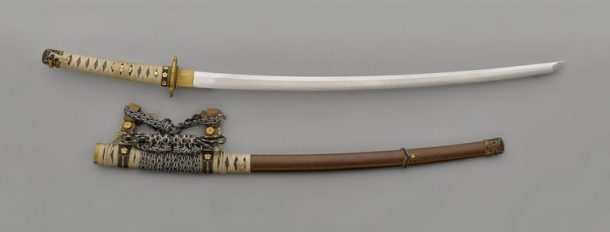
During wartime, a samurai had a bow in one hand, a tachi suspended from the waist, and a koshigatana passed through the belt. They were obliged to practice martial arts to maintain their skills during peacetime – and swords of wood or bamboo were used to practice. During the Edo period, 1600 – 1868, as the memory of actual conflict grew hazier, the design of swords straightened and narrowed towards the tip, reflecting the shape of the practice weapons.
As fewer swords were used, swordsmiths took this opportunity to concentrate on the artistry and blade-appraisers to test the cutting efficiency. The swords were tested on corpses tied together to increase resistance to the cut. Even though the swords were no longer designed for battle, some blades were able to cut through seven bodies bundled together in a single blow!
The process of unsheathing a sword became easier gradually, but it was only half the battle won; putting it back into the scabbard also has its intricacies. First, the blade-tip is gently rested at the opening of the scabbard. Once the blade is firmly held in position, you slide it into the scabbard, aligning the curvature of the blade and case. A slight wriggle can scratch the cutting edge as it is delicate, despite being intended to cut through armour.
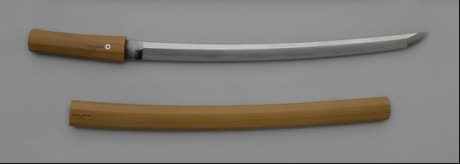
After learning to handle the long tachis and katanas, I came to audit the naginata, a short but steeply curved sword. The naginata, a type of pole weapon, was extremely effective against warriors on foot and used to keep rivals at a distance. The weapon was also useful against mounted samurai, and was used to attack a horse’s legs to dismount enemies – and then to attack them once they had fallen. In battle it was generally wielded in large sweeping motions, but could also be thrust directly through traditional Japanese armour. Even the butt-end of the pole was capped in steel – ready for attack.
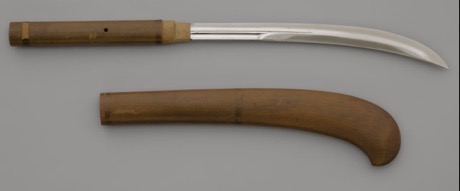
Now, a two-metre sword awaits us in stores. While we figure out how to uncover it, you can learn more about the Japanese arms and armour or visit the galleries from 6 August 2020.
Further reading
- G. Irvine and H. Green, The Japanese Sword, V&A Publishing, 2000
- Morihiro Ogawa, Art of Armor, Yale University Press, 2012

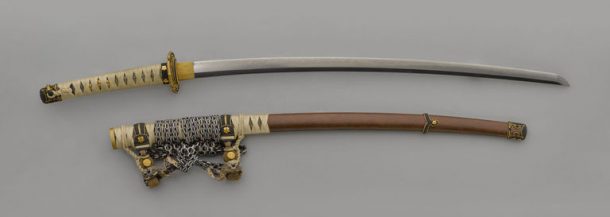
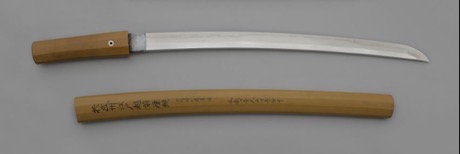
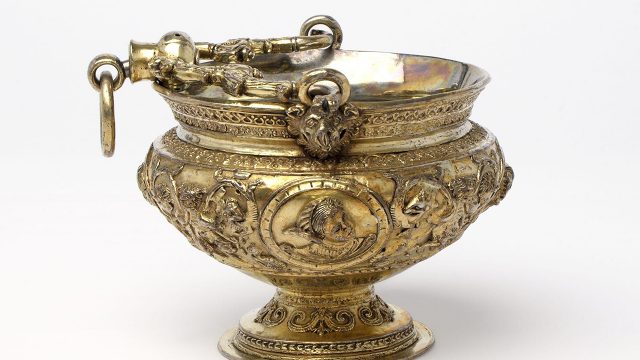
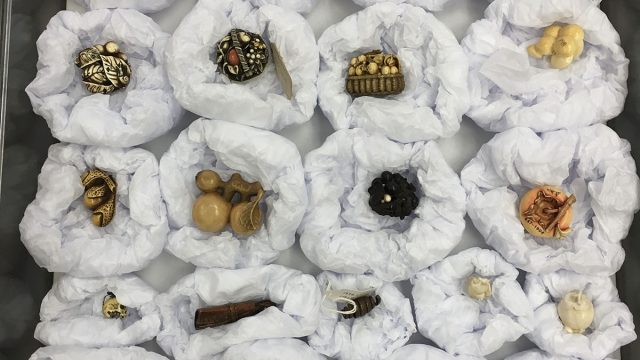
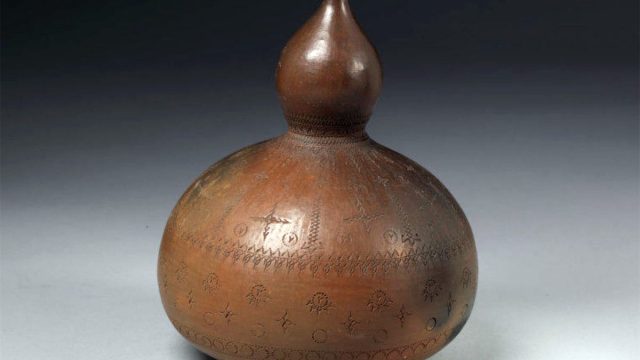
I was wondering if you sheathe or unsheathe from scabbard?